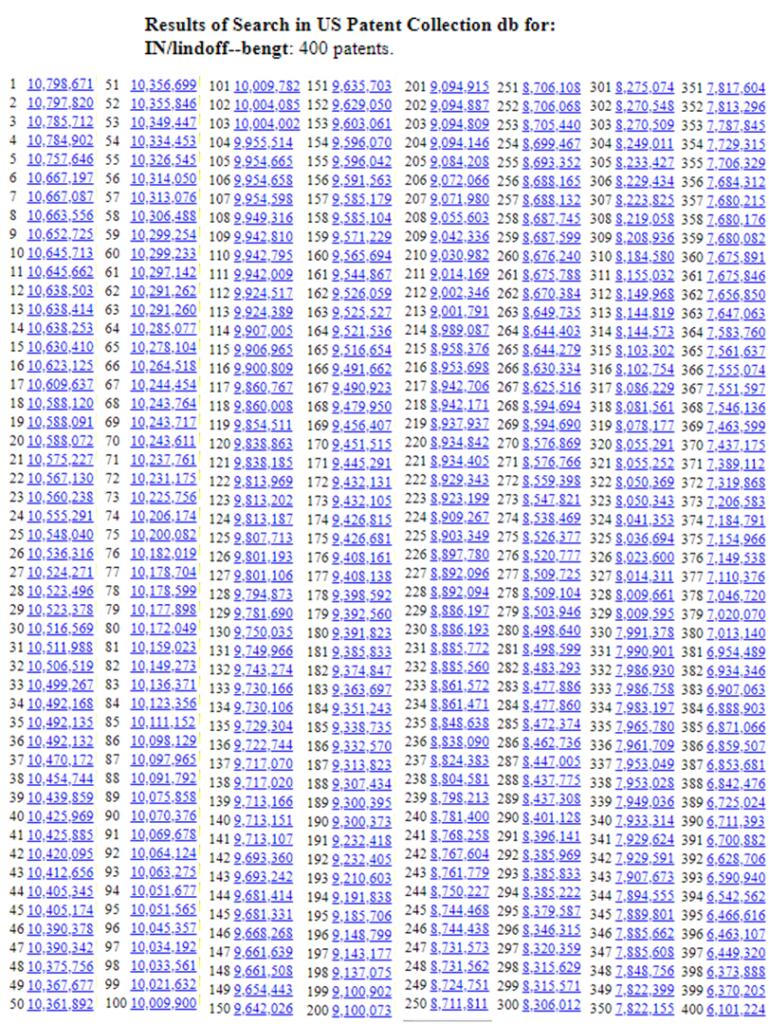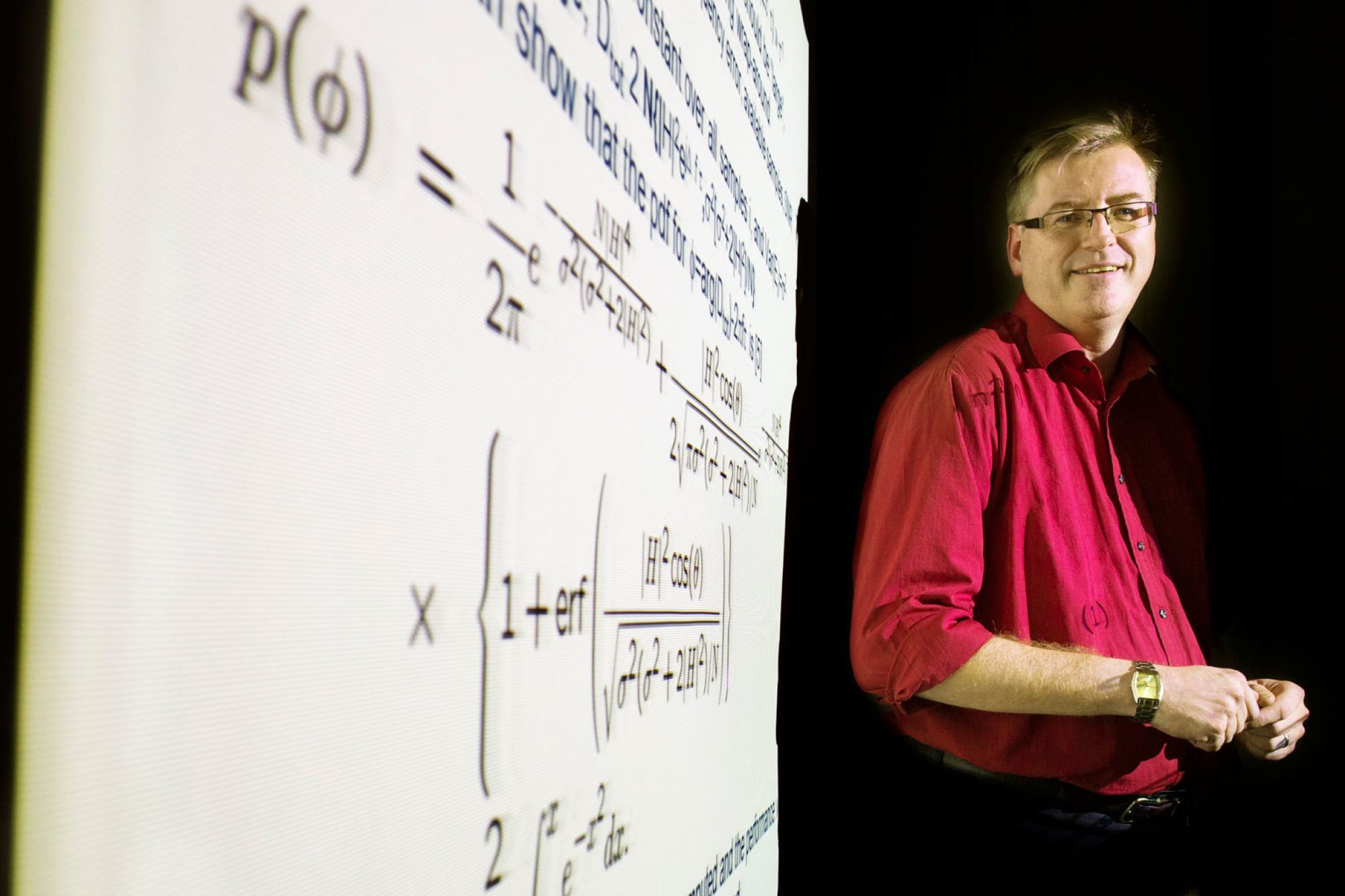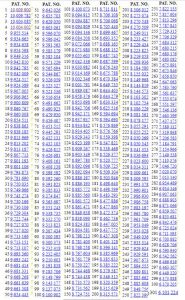A standard-essential patent (SEP) is a patent which claims an invention that must be used to comply with a technical standard, such as the 4G or the forthcoming 5G cellular communication standard. As I have mentioned in an earlier blog post a company claiming to have a SEP has to agree to license the patent according to FRAND- fair, reasonable, and non-discriminatory terms. However, what is the market value of a SEP for, say the forthcoming 5G (or NR) standard? The answer is;
The value for a 5G-NR standard essential patent is predicted (2020) to be 1 US cent (US$ 0.01) per 5G smartphone sold!
Below I will reveal how to figure that number out. Hang on.
How Many SEP will there be for 5G?
First of all, one needs to determine; how many SEPs there are (or more correct, will there be) for the 5G-NR standard? The way of determining whether a patent is essential to a particular standard, can be complex. In order to have a SEP, all parts of at least one claim in the granted patent need be possible to map to the standard. Hence, just for a company claim – for marketing purposes – having X SEP does not necessarily mean that they are actual SEP unless a deep analysis is made for respective of the X patents to see that they actually are possible to map to the standard.
Fortunately, from a recent finalized litigation between Ericsson and TCL in California, US, the FRAND rate for 2G, 3G and 4G SEP was determined . In this trial, the total number of standard essential patents for each wireless communication standard was estimated based on a quite detailed analysis. From the analysis one concluded the following total number of SEP patent families per 2G, 3G, 4G.
4G: 1481 families
3G: 953 families
2G: 265 families
As can be seen, the number of SEP increases for every new generation, mainly due to two things;
- The cellular communication standards cover wider scope for every new generation.
- The amount of companies involved in the standardization increases for each new generation (*), hence the total number of involved innovative persons worldwide increases, and that will increase the innovation and therefore the number of patentable ideas.
The 5G cellular communication standard will support new use cases, such as supporting ultra-low-latency applications (URLLC ) and massive MIMO on mmWave, and therefore becoming a wider standard than 4G. Hence, to predict the number, we use a first order linear extrapolation to estimate the number of 5G SEP. Then, one obtains the following estimate ;
5G: 2100 SEP families
5G FRAND rate
Next step is to determine the FRAND rate. Referring to the decisions in the Ericsson vs TCL trial again, the total royalty rate for 2G and 3G SEP was 5% and for 4G 6% of the smartphone sales price, hence a bit higher for smartphones supporting the latest generation. We assume that the FRAND rate for 5G, when smartphones are out on the market 2019-2020, will be a bit higher (more advanced technology and hence higher R&D investments), say 7%.
5G smartphone market value 2020
OK, how to predict the worldwide smartphone market value 2020? Some googling gives that the worldwide smartphone revenue for 2017 was $ 478 Billion, and a total of 1.5 Billion smartphones was shipped. That gives an average sales price of $318 per smartphone.
Estimates of the smartphone market 2020, indicates 1.7 Billion units shipped. I have not found any revenue estimates, but assuming a sales price corresponding to the average of the average sales price 2014-2017, (variation between $278-$318), giving an estimated sales price of $295, which rounded will be $ 300.
Now we have that
One single 5G SEP market value per smartphone 2020 (US $)= 300*0.07/2100=0.01.
“QED”
That means, in case one has an approved standard essential 5G patent, the market value 2020 – condition on that you succeed to sign a FRAND license agreement will all smartphone vendors in the world – will be …. US$ 17 Million…
This is of course a guesstimate with a lot of uncertainties, but the value might be higher, taking licensing possibilities for 5G Internet-of-Thing devices into account as well.
Anyhow, to conclude, if you are an inventor of a 5G SEP – be very proud – you have created significant business value for your company!
(*) According to the myths and legends within the 3GPP standardization, a famous 3GPP standardization delegate – and editor to one of RAN1 standard document – may have quoted:
“The number of standardization delegates participating on the 3GPP meetings doubles for every new cellular wireless communication generation”
The “Moore’s law of 3GPP”, is rumored to been shown at a conference in Sweden last year ? … so maybe the number of SEP per new G increase exponentially instead of linear as I have assumed, reducing the marketing value ….?


